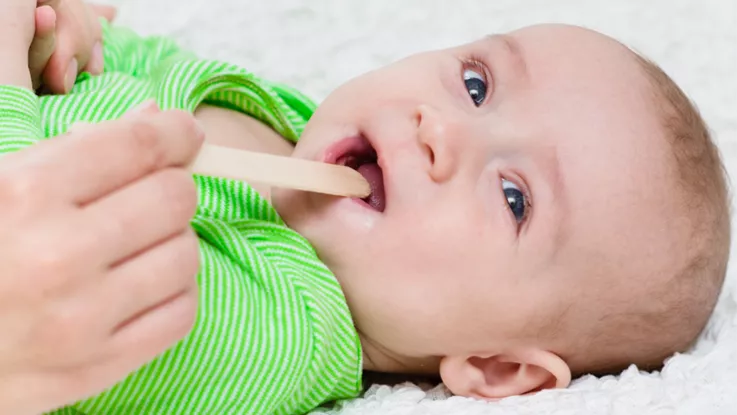This RCPCH evidence-based best practice guide, updated in 2025, provides recommendations on the optimal examination of the newborn palate during the routine examination to ensure early detection of a cleft palate.

You can download the full best practice guide at the bottom of this page.
Background
We developed this best practice guide in collaboration with key partners to aid neonatologists, paediatricians, nurses, midwives, GPs, health care assistants and any other health care professional to detect cleft palate in neonates, and to improve and standardise routine postnatal examination of the palate.
It is been developed in accordance with RCPCH Setting standards for development of clinical guidelines in paediatrics and child health. The National Institute for Health and Care Excellence (NICE) accredited the RCPCH guideline development process as a mark of quality between 2006 and 2024 before closing its accreditation programme in July 2024.
The best practice guide provides recommendations to health care professionals for optimal examination of the palate to aid early detection of a cleft palate. The recommendations apply to the Newborn and Infant Physical Examination (NIPE), when performed within 72 hours of birth and at 6-8 weeks. While the guide aims to help healthcare professionals in their everyday work, it does not replace clinical knowledge and expertise.
Six key recommendations
- Healthcare professionals should examine an infant’s hard and soft palate as part of Newborn and Infant Physical Examination (NIPE) and record this in the SMaRT4 NIPE (S4N) live system or GP IT system.
- Examination of an infant’s palate should be carried out by visual inspection.
- A torch and method of depressing the tongue should be used to visualise the whole palate.
- Parents should be informed if the whole palate (including the full length of the soft palate) has not been visualised during the NIPE.
- If the whole palate is not able to be visually inspected at first attempt then a further attempt at visual examination should be made within 24 hours.
- Trusts should provide training on the correct method of visual inspection of the palate to all healthcare professionals required to carry out the NIPE.
- Key changes in the 2025 update
-
- The recommendation in the previous version of the best practice guide (2014) to employ visual inspection using a tongue depressor and torch to examine the newborn palate as part of the NIPE newborn screening programme has resulted in a significant increase in the early detection of cleft palate in the UK.
- In this revised best practice guide (2025), we extend the target population to include infants examined between 6 and 8 weeks as part of the NIPE infant screening programme performed by GPs, and infants whose palate is examined at any time as part of an assessment by a healthcare professional.
- The 2025 revision makes a minor change to recommendation 1 to include SMaRT4 NIPE (S4N), a Public Health England live system which supports the recording and managing of each baby’s NIPE screening record in hospital and GP IT systems used in primary care.
- In line with changes to recording systems used in the NHS, we recommend that results of examination of the palate are documented in the SMaRT4NIPE (S4N) live system (in hospitals) and GP IT systems.
eLearning
If you're a health professional in neonatal care, sign up for our free online learning tool. You can register or sign in to your free account on RCPCH Learning, our learning platform.
Get permission to reuse published RCPCH content quickly and easily










